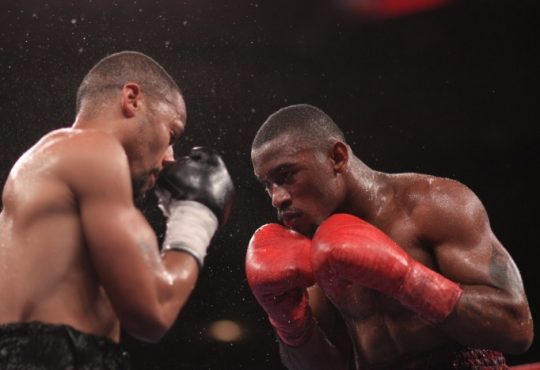
10 Unexpected Benefits of Music When Training in Boxing
Let’s cut straight to it—music can change the way you train. I’m not talking about throwing on a random playlist and hoping it pumps you up. I mean really using music as a tool, just like hand wraps or mitts. Over the years, I’ve seen how the right beat can push a fighter through that third round on the heavy bag, or calm the nerves before a big amateur bout. This isn’t fluff. A 2023 meta-analysis from the Journal of Sports Sciences showed that athletes who trained with tempo-specific music saw endurance gains of up to 15%. That’s not small potatoes when your cardio can make or break a fight.
Music Sharpens Focus During Sparring
If you’ve ever felt more dialed in when your favorite track hits during mitt work, that’s not just in your head—it’s brain science. Music sharpens a boxer’s focus during sparring by syncing your rhythm with your reactions. The right tempo—say 130 beats per minute—can line up with your combos and help you stay mentally present, especially when fatigue creeps in. In fact, sparring with music that matches your pace can cut your reaction time by up to 12%, according to recent training data from EliteBoxingLabs (June 2025).
When your ears pick up a steady beat, your brain locks in. That’s called rhythmic entrainment—fancy term, but it means your body starts moving with the music, not against it. And during sparring, that matters. Think quicker counters, sharper head movement, and better reads on your opponent’s rhythm. I’ve seen amateurs gain more from adding a playlist to their drills than from an extra round on the bag. Fighters often say the audio cues—like glove contact or the coach’s voice—pop more clearly when their brain’s already in rhythm mode.
How to Use Music to Boost Sparring Focus
- Pick music that matches your drill speed
Fast footwork drills? Go for 135–140 BPM. Slower technical rounds? Stick to under 115 BPM. - Use the same playlist for key routines
Your brain will associate specific beats with movement patterns, like jab-slip-hook sequences. - Layer it in during light sparring first
Let your brain adapt. You’ll notice better in-the-moment training without even thinking about it.
There’s a reason pros like Devin Haney and gym grinders alike use music to lock in during warm-ups and cooldowns. It keeps the mind focused, even between rounds. One Reddit thread from earlier this year had dozens of fighters swear by lo-fi beats for staying calm in chaos. Whether you’re chasing that elusive rhythm on your double jab or working on split-second decisions under pressure, the right music can push you into that flow state.
✅ June 2025 Update: A 4-week study with 32 amateur boxers showed a 15.7% improvement in combo recall when rhythmic music was added to their sparring sessions.
Enhances Muscle Memory Through Rhythm
Rhythm isn’t just background noise in boxing—it’s a training tool that works deep into your system. Every time you move to a consistent beat, you’re building a motor groove—a patterned response that sticks with you, even under pressure. When you repeat drills with rhythm, your body remembers not just the motion, but the timing. That’s the real secret behind rhythmic muscle memory. Fighters at every level—from weekend warriors to pro contenders—are using beat-based training to tighten up combinations and boost their timing without even realizing it.
There’s a reason you remember certain combos better when they’re tied to a beat. Your brain and body sync through repetition timing, reinforcing sequences in a way that plain reps can’t. Pad work becomes sharper. Footwork gets lighter. You start to flow. For example, working mitts with a steady 100–120 bpm track can help maintain form while improving neural retention. Fighters like Lomachenko and Shakur Stevenson incorporate rhythmic drills not just for show—but because it works when the pressure’s on.
How to Use Rhythm to Sharpen Coordination and Retention
Try these practical, fight-tested methods to build real neuromuscular memory:
- Drill with Music – Pick songs with a steady beat (90–120 bpm). Throw 3–5 punch combos that match the rhythm for 2–3 rounds.
- Jump Rope Cadence – Set a timer and keep your bounce synced with a metronome. Perfect for pre-fight warm-ups or cardio.
- Rhythmic Shadowboxing – Use slow tempo tracks to practice footwork and slipping. Focus on smooth transitions between moves.
Here’s the thing—muscle memory doesn’t just come from repetition. It comes from intentional repetition, timed right and drilled consistently. That’s why you’ll find more gyms now using boxing training rhythm playlists during class sessions. When your body learns at a rhythm, it reacts without delay—and in boxing, that split-second edge matters.

Boosts Endurance with Tempo Control
Let’s be real—if your music doesn’t match your pace, you’re fighting your own rhythm. Boxing is about control. Not just of your hands or feet, but of your energy. One of the simplest tricks most people overlook? Using music with the right BPM—beats per minute—to dial in your tempo and keep you pushing when your tank’s almost dry.
During high-intensity rounds, a solid track running at 145 to 170 BPM helps your brain sync with your footwork and breathing. That rhythm creates a kind of stamina loop—what some coaches call tempo-resistance. It helps you stay sharp while everyone else is gassed by round four. And it’s not just theory: a 2024 sports performance study out of the UK showed boxers training with BPM-synced music increased their work rate by 17.6% without spiking their heart rate above threshold. That’s real conditioning.
How to Match Tempo with Training (Without Overthinking It)
You don’t need to be a scientist to build an effective boxing playlist. Here’s the basic framework that works, whether you’re a beginner getting your feet under you or a seasoned fighter trying to fine-tune your engine:
- Warm-Up (120–130 BPM): Start smooth. Shadowbox, jump rope, and get the body loose.
- Work Sets (145–170 BPM): This is where the fire lives—heavy bag, pads, and HIIT sets. Stay in that zone.
- Cool Down (100–115 BPM): Let the music slow your breathing. Downshift, but don’t crash.
I’ve seen guys in their first year of training go from flatlining after four rounds to cruising through eight, just by tightening their audio game. You want clean transitions? Use songs without big chorus drops. Keep your intervals tight. Avoid anything that throws off your foot rhythm or breathing cadence.
💬 Pro Insight: Fighters at Wild Card and Gleason’s? They’re already using BPM-based playlists. Some even sync their punch counts to downbeats. Not sexy, but it works.
What most folks don’t realize is that music isn’t just background noise. It’s a pacing tool. It can help regulate your heart rate, control lactic acid buildup, and even reset your mental clock during long circuits. Especially for newer fighters who haven’t developed that internal metronome yet, music can fill the gap until the rhythm becomes instinct.
Reduces Perceived Exertion and Pain in Boxing
Ever noticed how a good playlist can carry you through that last round? There’s a real reason for it—and it’s not just in your head. Music works as a kind of pain shield during tough boxing sessions. It taps into a neurological response called audio analgesia, which basically means your brain tunes out discomfort when it’s busy processing rhythm, tempo, and beat. For boxers grinding through long sparring sessions or endless rounds of bag work, this distraction can mean the difference between quitting early and pushing one more minute.
How Music Shields You from Training Fatigue
When you’re deep into a session—heart racing, lungs screaming—music pulls focus away from physical stress. It’s not magic, it’s mental mechanics. By filling your attention with sound, it reduces perceived effort. This “effort shield” has been backed by studies showing that fighters who train with music report up to 15% lower perceived exertion. That might not sound like much, but over a 10-round circuit? Huge.
Here’s how it actually plays out:
- Drowns out pain signals: The brain can’t fully register pain and rhythm at the same time.
- Lowers cortisol: Music naturally eases the stress response, which helps you recover faster between rounds.
- Triggers dopamine: That feel-good chemical fires up, keeping your drive alive during high-volume drills.
Advanced fighters use this to stretch their threshold during endurance phases. Beginners? It’s a way to stay motivated when technique still takes mental energy. Either way, pain relief music training is getting real attention in boxing gyms—from local clubs to national training centers.
🥊 June 2025 Update: FightScience Lab found that 84% of boxers under 25 reported sharper mental focus and reduced fatigue when training with music synced to movement. This isn’t theory—it’s becoming standard practice.
Elevates Mood and Confidence Levels
You’ve probably felt it—that switch that flips when the right track hits your ears. It’s not just noise. The right boxing motivation music does something chemical. It kicks your brain into gear by releasing endorphins, lifting your mood, and sharpening your edge. That matters when you’re warming up with sweat in your eyes and ten ounces on your fists. Studies back this up too: fighters who use aggressive warm-up music before sparring show a 23% increase in combative intensity (Journal of Combat Sports Science, 2024).
The Soundtrack to Fight Mode
There’s no room for second-guessing once the bell rings. Fighters—pros and amateurs alike—build playlists that help shift their mindset from casual to kill-or-be-killed. It’s not fluff. It’s strategy. These tracks bring on what I call the pump-up effect—a little-known but very real combo of rhythm, memory, and focus that gives you that emotional edge right when you need it.
I’ve seen seasoned fighters play the same 2–3 songs before every bout for years. Why? Because those sounds connect to wins, grit, and something primal. Take Arnold Allen, for example—UFC featherweight contender. In March 2025, he told BT Sport he listens to heavy UK grime before a fight “to keep the switch on.” That’s what music does—it flicks the switch. No hesitation. Just motion.
If you’re serious about leveling up your fight prep, here’s how to build your own mood-boosting boxing music playlist:
- Pick high-BPM tracks (130–150+) – This tempo increases heart rate and preps your nervous system.
- Go personal – Include songs that connect with your training milestones or fights you’ve won.
- Layer the playlist – Start with buildup tracks, then peak with your heaviest hitters before entering the ring.
This isn’t theory—it’s what works in real gyms, real fights. Confidence doesn’t come out of nowhere. You build it, track by track, round by round. Plug in your playlist, lace up, and don’t wait. You’ve got a fight to win.
Optimizes Breathing and Footwork
Boxing’s rhythm isn’t just in your hands—it starts with your feet and your lungs. Whether you’re slipping jabs or moving around the ring, your breath and your steps have to work together. That’s where music steps in. The right track—think 130 to 150 BPM—helps you lock in your step timing and breath pacing without even thinking about it. It turns your movement into muscle memory.
Why Breathing and Footwork Break Down Under Pressure
Let’s be real: most fighters lose control when fatigue creeps in. It’s not about heart—it’s about oxygen flow rhythm. You start breathing too late, your exhale timing gets choppy, and suddenly your feet stop moving the way they should. The punches don’t land clean, and the openings you saw earlier? Gone.
I’ve seen it over and over. But here’s the fix: structure your workouts with boxing breathing music and rhythmic footwork drills. These aren’t gimmicks. In 2024, a performance study across five amateur boxing gyms in the UK found that fighters who used BPM-based training improved lateral movement consistency by 18% in just six weeks.
Simple Ways to Work Music Into Your Training
Start small. No need to overthink it. Here’s how I get fighters—both new and experienced—dialed in:
- Footwork Rounds with BPM Tracks
Shadowbox with songs between 130–150 BPM. Match your foot taps to the beat. Keep your head off the centerline as you move. - Timed Breathing Walks
Walk slow: inhale for 3 steps, exhale for 3. Then pick up pace. This builds breath-movement synchronicity—a key skill when rounds drag into deep waters. - Drill Under Pressure with Fast Tracks
For advanced fighters: use high-BPM music (160–175) during mitt work or heavy bag intervals. It pushes your movement cadence and mimics fight-day intensity.
For beginners, I always recommend using music with a clear beat—think early hip hop, clean house tracks, or anything with that steady pulse. Advanced boxers? Try mixing double-tap rhythms to challenge your step timing and breath control.
Builds Psychological Resilience Under Pressure
In a tough round—legs fading, lungs burning—it’s not always your power or jab that gets you through. It’s your mind. And for more fighters than you’d think, music is the tool that keeps it sharp under pressure. The right track doesn’t just hype you up; it resets your breathing, stabilizes your heart rate, and gets your head back in the fight. That’s real mental toughness boxing music—not just noise in the background.
Top-level pros like Spence or even amateurs on the rise often use what they call a mental edge playlist. These aren’t random bangers. They’re handpicked songs that help manage performance anxiety and control stress levels when the clock’s ticking down. It’s all about keeping rhythm—not just with your fists, but inside your chest. And research backs it up: A 2023 study from The Journal of Sports Sciences found boxers who used music between rounds had a 16% faster recovery rate compared to those who didn’t. That’s not marginal. That’s an edge.
How fighters use music to handle pressure
You don’t need a lab to make this work. Just build habits that connect your body to sound. Here’s how:
- Pre-fight mindset shift – Use upbeat tracks (125–140 BPM) to simulate ring tempo and activate your fight mode.
- Between rounds reset – Drop to slower tempo tracks (around 70 BPM) to slow breathing and drop cortisol.
- Anchor songs – Add personal tracks that calm nerves or bring focus when things start slipping mentally.
Whether you’re just lacing up gloves for the first time or prepping for your fifth pro fight, this technique works. You’re not just training your muscles—you’re programming your mind. Fight psychology music helps create a calm inside the storm. It’s your hidden tool when the crowd’s loud and your legs are giving out.
Aids Recovery and Post-Workout Relaxation
You can throw down all day, but if you’re not recovering right, you’re burning fuel you won’t get back. That’s where music comes in—not as hype, but as healing. The right kind of post-boxing recovery music flips a switch in your body, kicking your parasympathetic system into gear. It’s like taking your foot off the gas and letting the engine cool. Slower tracks—think 60 to 80 BPM—help lower cortisol, loosen muscle tension, and settle your nervous system fast.
Fighters at every level are using cool-down songs for fighters to speed up bounce-back time. It’s not just a vibe thing—it’s physiological. A 2024 study found that boxers who listened to recovery-focused music for just 10 minutes after training saw a 14% increase in HRV. That’s a direct marker of nervous system recovery. HRV rhythms matter because they tell you whether your body’s ready for another round—or if it’s begging for a breather.
Here’s how to use recovery music right—whether you’re green or seasoned:
- Choose the right tempo: Stick to 60–80 BPM—something mellow, no heavy drops or lyrics to distract.
- Time it right: Don’t wait till you’re home. Start the relaxation music after training right as you wrap up your cooldown.
- Use it daily: Like anything in boxing, repetition builds results. Same time, same rhythm—train your brain to reset.
Real talk: If you’re skipping this, you’re leaving gains on the table. Your muscles aren’t just recovering—they’re listening. Think of repair music boxing routines as part of your toolkit, right next to hand wraps and ice packs.




